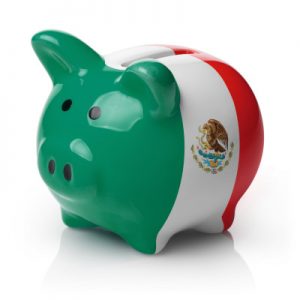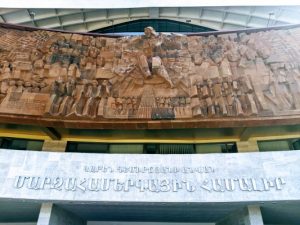Sixteen-year-old Swedish activist Greta Thunberg is the symbol of a climate change generation gap, a girl rebuking adults for their inaction in preventing a future apocalypse. Thunberg’s riveting speech at the UN’s Climate Action Summit has been viewed more than 2 million times on YouTube, and she was considered a viable contender for the Nobel Peace Prize.
In a tweet, Thunberg explained what made her so fearless: “I have Aspergers and that means I’m sometimes a bit different from the norm. And—given the right circumstances—being different is a superpower. #aspiepower.”
People with Asperger’s applaud the way she reframed a “disorder,” as it used to be called in the Diagnostic and Statistical Manual of Mental Disorders, into an asset. But Thunberg’s comments also fuel a lingering debate about whether Asperger’s even exists as a distinct condition—and if it doesn’t, why people are still so attached to the designation.
Asperger syndrome, first coined in 1981, describes people who have problems with social interaction, repetitive behaviors, and an intense focus on singular interests. Sheldon Cooper, the theoretical physicist on the long-running TV show “The Big Bang Theory,” became an exaggerated prototype, a brilliant person who missed social cues and couldn’t grasp irony.
His awkwardness spawned humorous predicaments, but in real life, people with Asperger’s can face more daunting challenges. It became a diagnosis in 1994, distinct from autistic disorder, but the lines were blurry even then. In 2013, the fifth edition of the Diagnostic and Statistical Manual of Mental Disorders (known as DSM-5) eliminated Asperger’s and redefined the autism spectrum as encompassing level 1 (“requiring support”) to level 3 (“requiring very substantial support”).
“Technically, the DSM-5 essentially made Asperger’s a non-diagnosis,” says Dania Jekel, executive director of the Asperger/Autism Network, which formed after Asperger’s first gained official status, from an outpouring of people seeking resources and a sense of community.
The World Health Organization also is eliminating Asperger syndrome from its International Classification of Diseases. The ICD-11, which was adopted this year and will be implemented globally by 2022, instead calls it “autism spectrum disorder without disorder of intellectual development and with mild or no impairment of functional language.” Proponents of the change hope to reduce stereotypes. For example, girls were much less likely to receive an Asperger’s diagnosis than boys, and girls were more likely to be diagnosed at an older age—a disparity that points to bias. Meanwhile, placing people “on the spectrum” equalizes access to resources, including insurance coverage.
But Jekel worries that some people with Asperger’s-like attributes will return to the ambiguous space they once occupied—too well-functioning to be diagnosed on the autism spectrum, but still in need of significant support. “Twenty-two years ago, there was a whole group of people who were unidentified, had no resources, didn’t know each other,” she says. “The diagnosis of Asperger’s enabled the creation of a large and very supportive community and allowed people to find relevant resources. Changes in DSM-5 jeopardized that.”
Erika Schwarz, for example, wasn’t diagnosed until she was 39. Asperger’s explained a lot about her struggles in the workplace and with personal relationships. It made her wonder how different her life might have been if she had known—and had help learning how to cope. “It does give you a space to have a bit of compassion for yourself,” she says.
When she watches Thunberg on the world stage, she remembers herself as a young girl, intensely concerned about environmental degradation. “All the things I worried about as a kid, they’re validated,” says Schwarz, 50, who is now an environmental artist.
Yet Thunberg’s rise to icon status has also stirred long-standing resentments about how people view the rungs of the spectrum. The levels in the current DSM definition of autism are based on support needs, which can be fluid. “I would put myself at all three levels, inconsistently,” says Terra Vance, founder and chief editor of the online publication the Aspergian. But the levels also can feel like a ranking: more impaired or less so.
While #aspiepower endures on Twitter, so does #AllAutistics, a symbol of inclusivity and solidarity among people on the spectrum—even those who can’t speak or require help with daily functions. “Using the word ‘aspie’ doesn’t make you an aspie supremacist,” tweeted one person who used the hashtag #AllAutistics. “Thinking that ‘aspies’ are special shiny autistics who are functionally different from ‘severe’ autistics is aspie supremacy. Fight that. Always.”
The use of the term Asperger’s is further complicated by the history of its namesake, Hans Asperger, an Austrian pediatrician who first defined autism in 1944 in its “profound” and “high-functioning” forms. Asperger worked at the University Pediatric Clinic in Vienna, at a time when children with significant disabilities who were deemed a burden to the state were covertly “euthanized,” according to Nazi eugenics.
After the war, Asperger was viewed as having been a protector of children whom he considered to have potential despite their challenges, and he continued to have a distinguished career; he never was a member of the Nazi party. Yet extensive research unearthed evidence that Asperger sent at least some children to a clinic that was known as a center of “child euthanasia.”
For some, that disturbing history is reason enough to erase the term Asperger’s. But its use endures beyond the shadow of its origins. With an Asperger’s diagnosis, people felt enormous relief at finally being understood, and many don’t want to give up that identity.
Stephen Shore is an educator and author who identifies as autistic with the subtype of Asperger’s. That designation remains useful, he says, even to clinicians. Still, Shore doesn’t express strong feelings about the change in wording. He’s more concerned that people obtain the support they need and focus on the abilities they have. “What I find is that autistic people who are successful have found a way either by chance or design to use their highly focused interest and skill to become successful,” says Shore, who is on the board of Autism Speaks, a national advocacy and research organization.
Even though it’s been six years since the DSM-5 did away with the Asperger’s diagnosis, the name still evokes a sense of belonging. In New York City, Aspies for Social Success has about 1,000 members for whom it organizes outings and support groups, including Aspie Raps (rap sessions) at the New York Public Library, followed by dinner at a restaurant. Paradoxically, people who would typically feel anxious at social events look forward to meeting other people on the spectrum.
“What works is that we’re all communicating on the same wavelength,” says executive director Stephen Katz, who was diagnosed at age 50. “Some people describe it as having a different operating system than the rest of the population.”
A change in the language isn’t going to disrupt that connection.
More Great WIRED Stories
- How sleep cleans toxins from the brain
- The shady cryptocurrency boom on the post-Soviet frontier
- Distant galaxies? The Death Star? Nope, these are explosions
- The death of cars was greatly exaggerated
- Why one secure platform passed on two-factor authentication
- 👁 Prepare for the deepfake era of video; plus, check out the latest news on AI
- ✨ Optimize your home life with our Gear team’s best picks, from robot vacuums to affordable mattresses to smart speakers.



